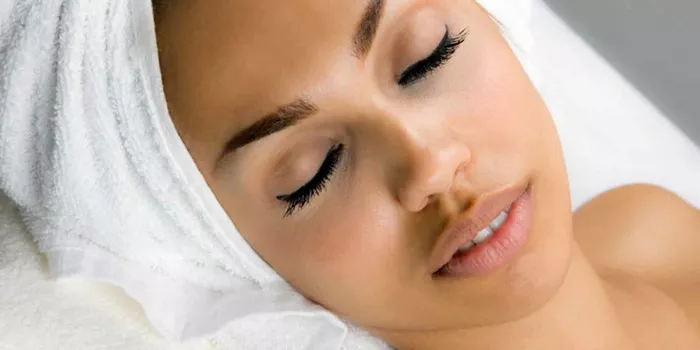As we age, one of the most noticeable changes in our appearance is the development of wrinkles on the skin. Wrinkles are a natural part of the aging process, but they can also be influenced by various factors beyond chronological age. If you’ve been wondering why your skin has become so wrinkly, this article will explore the primary causes and contributing factors, as well as discuss strategies to help manage and reduce the appearance of wrinkles.
Understanding Wrinkles
Before delving into the reasons behind wrinkly skin, it’s essential to understand what wrinkles are and how they form. Wrinkles are lines, creases, or folds in the skin’s surface. They can appear anywhere on the body but are most commonly associated with the face, neck, and hands. Wrinkles are typically categorized into two main types:
Dynamic Wrinkles: These wrinkles are caused by repeated facial muscle movements, such as smiling, frowning, or squinting. They tend to appear as fine lines and may become more pronounced over time.
Static Wrinkles: Static wrinkles result from factors like natural aging, sun damage, and environmental influences. They are typically deeper and more visible, even when the face is at rest.
Common Causes of Wrinkles
Aging (Intrinsic Aging): Intrinsic aging is the natural aging process that occurs over time. As we age, our skin undergoes several changes:
Reduced Collagen and Elastin: Collagen and elastin are proteins responsible for skin elasticity and firmness. Their production decreases with age, leading to thinner and less resilient skin.
Slower Cell Turnover: Younger skin naturally sheds and renews cells more rapidly. As we age, this process slows down, resulting in a duller complexion and slower healing of skin damage.
Sun Exposure (Extrinsic Aging): One of the primary external factors contributing to wrinkly skin is exposure to UV radiation from the sun. Prolonged sun exposure damages collagen and elastin fibers in the skin, leading to premature aging and the formation of wrinkles.
Smoking: Smoking is known to accelerate the aging process of the skin. It reduces blood flow, which impairs the skin’s ability to receive oxygen and nutrients. Additionally, smoking releases harmful chemicals that damage collagen and elastin.
Poor Nutrition: A diet lacking in essential vitamins and antioxidants can contribute to premature skin aging. Nutrient-rich foods help protect the skin from damage and support collagen production.
Dehydration: Insufficient hydration can make the skin appear dry and more prone to wrinkles. Proper hydration is vital for maintaining skin health and elasticity.
Genetics: Genetics can play a significant role in how your skin ages. Some individuals are genetically predisposed to develop wrinkles earlier or more prominently than others.
Repetitive Facial Expressions: Repeated facial movements, such as squinting, smiling, and furrowing the brow, can lead to the development of dynamic wrinkles over time.
Sleep Habits: Poor sleep quality and insufficient sleep can contribute to the formation of wrinkles, as the skin does not have adequate time to repair and regenerate during sleep.
Managing and Reducing Wrinkles
While wrinkles are a natural part of the aging process, there are strategies and treatments available to help manage and reduce their appearance:
Sun Protection: The most effective way to prevent further wrinkle formation is to protect your skin from the sun. Use sunscreen with at least SPF 30, wear protective clothing, and seek shade when outdoors.
Skincare: Establishing a good skincare routine can make a significant difference. Use products with ingredients like retinoids, antioxidants, and peptides to promote collagen production and protect against further damage.
Healthy Lifestyle: Maintain a balanced diet rich in vitamins and antioxidants. Stay hydrated by drinking enough water, and avoid smoking and excessive alcohol consumption.
Facial Exercises: Some people find that facial exercises help strengthen facial muscles and reduce the appearance of wrinkles. Consult with a professional for guidance.
Cosmetic Treatments: Options such as Botox injections, dermal fillers, chemical peels, and laser therapy can provide effective wrinkle reduction. These treatments should be performed by qualified professionals.
Topical Retinoids: Retinoid creams are known for their ability to stimulate collagen production and improve skin texture. They are available in both prescription and over-the-counter formulations.
Microneedling: This minimally invasive procedure involves using tiny needles to stimulate collagen production. It can improve skin texture and reduce the appearance of wrinkles.
Conclusion
Wrinkles are a natural part of the aging process, influenced by both intrinsic and extrinsic factors. While they cannot be eliminated entirely, the right skincare regimen, sun protection, a healthy lifestyle, and various cosmetic treatments can significantly reduce their appearance. Embracing these strategies can help you maintain smoother and more youthful-looking skin as you age. If you’re concerned about wrinkles and their impact on your appearance, consult with a dermatologist or skincare professional for personalized advice and treatment options.


